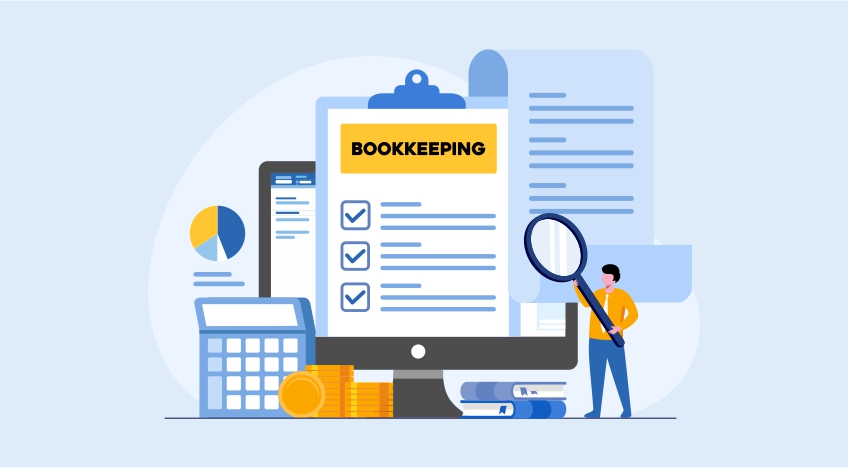- What is inventory management?
- How inventory management software increases sales & profit of a business
- How to choose the best inventory management software for your business in Bangladesh?
Inventory is more than rows and stacks of stock in a room. It is one of the most important factors in a business and a significant investment of the company’s funds. When managed well, it can maximize cash flows. Inventory that is static locks up the company’s funds and can severely impact cash flows. Optimal inventory management is more than just keeping a count of what and how many items are in stock. It is an asset that should be utilized to the company's maximum benefit. The movement of inventory is the process that generates a company’s revenues.
What is inventory management?
Inventory management is the process of ordering, storing, organizing, and selling stocks. Inventory can include goods to be sold, raw materials, components, supplies, finished products, and other items that the company stocks. In a manufacturing company, inventory management is the end-to-end process of managing stocks from raw materials to finished products.
Inventory management manages the stock levels, so they are neither over nor understocked. Too much inventory is a lock-in of the company’s money and costs more money to store and maintain. Too little inventory can stall or impact the manufacturing or sales process. So getting the balance of inventory right is the key to inventory management.
Inventory management should also prevent theft, pilferage, spoilage, damage, and other challenges. If the inventory is stored for too long, it could get spoiled or go past its expiry date, and such inventory would have to be disposed of at discounted rates at a loss. Sometimes, the market demands shift, and too much inventory of an item out of demand might result in a loss on that item.
So, inventory management is an essential part of business management. A company should know what to buy, how much, and when. They should also be able to procure inventory at advantageous prices and sell at profitable rates. Too much stock is expensive, and too little is risky. Reorder levels should be monitored to prevent running out of stock. Some companies use the just-in-time (JIT) to stock inventory before required. That reduces the risk and the holding costs of inventory. Perishable items and time-sensitive items should be managed with particular care. Items that are risky to store should also not be overstocked.
Not all inventory items are easy to procure. When the supply chains are slow or complex, the company should manage inventory to prevent stockouts. Inventory management maintains this delicate balance between gluts and stockouts. Some of the more popular inventory management techniques are just-in-time (JIT) and materials requirement planning (MRP).
How inventory management software increases sales & profit of a business
Inventory management software helps you monitor and manage all your inventory information. It also enables you to view all the other processes that impact inventory, such as purchase, sales, delivery, returns, etc. The advantages of inventory management software boost the profitability and sales figures in the following ways:
Effective control: It is challenging to control inventory if you cannot visualize the stock quickly. Inventory management software helps analyze inventory data and generate reports. This helps in easy management of all the aspects of inventory. Inventory reports help you quickly spot where you are over or understocking items. The uses of inventory analysis include spotting trends and controlling inventory levels in response to trends. You can stock optimally to prevent locking in too much money in inventory and prevent running short of items. Choose a software such as TallyPrime that gives you maximum visibility, reporting, and analysis tools to manage your inventory well. Reorder levels alert you of the need to restock items running low.
Cuts costs: Managing paperwork manually takes far more time, effort, and human resources than inventory management software. When employees are freed from repetitive manual record-keeping work, they can focus more on other aspects of inventory management. This also saves the company money on staffing costs. The huge amount of data that inventory management involves makes it more sensitive to human errors that could be expensive for the company. One of the advantages of inventory management software is the reduction of this risk.
Improves order fulfillment: The movement of goods through the inventory process is more efficient and accurate with software. When the system is manual, it is slow, error-prone and difficult to monitor. Errors in order fulfillment lead to dissatisfied customers and returns. Errors in placing incoming orders can also be an expensive issue that could impact the rest of the company’s process. Inventory management helps manage the entire workflow better with minimal errors and maximum speed. It helps all the personnel involved improve their efficiency by enabling access to all the relevant data. An inventory management software that integrates all the inventory stages helps access all the required information of a product right from when it is ordered and arrives until its dispatch.
Planning, budgeting, and forecasting: Monitoring historical and current data is essential to spotting inventory and demand trends. You can be better prepared if you tend to run out of certain products in the peak season. If certain products are trending, you can stock enough to cope with the demand. The identification of new expansion opportunities is one of the uses of inventory software.
Inventory data analysis is essential to help plan budgets and make reliable forecasts. Inventory management through software enables the company to manage its funds better and maximize inventory turnover and profits.
Happier customers: Improved order fulfillment and delivery times are also advantages of inventory management. Better order fulfillment makes customers happier and bolsters the goodwill towards the company. In a manufacturing company, inventory management software helps the manufacturer deliver goods and services accurately and on time to satisfy buyers. The management of the accounts payable also ensures that the company maintains excellent relationships with suppliers.
How to choose the best inventory management software for your business in Bangladesh?
The right inventory management software should help you boost your inventory management efficiency, maintain a good turnover, and maximize profits. TallyPrime is an integrated software that helps you manage your inventory process end-to-end. It also helps you stay compliant with accounting standards and local laws and regulations. TallyPrime lets you customize the inventory management features to suit your company’s unique processes. It also integrates with other related accounting modules, such as financial accounting, so that you can manage the financial aspects of inventory management through a single solution.
TallyPrime’s inventory management software works with different industry needs. Its extensive features are useful in applications ranging from retail to manufacturing. TallyPrime’s inventory analytics help you visualize your inventory data to spot trends and easily monitor all aspects of inventory. So, stop inventory issues that are impacting your profitability and efficiency. Use TallyPrime for inventory management and see its difference to your company’s bottom line.
Read More:











